-
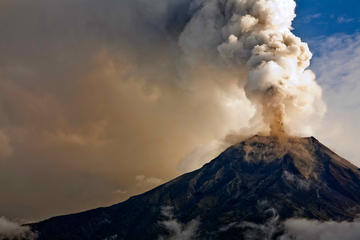 Avenue of the Volcanoes
Avenue of the Volcanoes South of Quito, two parallel mountain ranges run from north to south along a 124-mile (200-km) route where more than a dozen of Ecuador’s volcanoes are found. German explorer Alexander von Humboldt called it the Avenue of the Volcanoes in the 18th century, and aptly so. Eig
Avenue of the Volcanoes
Avenue of the Volcanoes South of Quito, two parallel mountain ranges run from north to south along a 124-mile (200-km) route where more than a dozen of Ecuador’s volcanoes are found. German explorer Alexander von Humboldt called it the Avenue of the Volcanoes in the 18th century, and aptly so. Eig
-
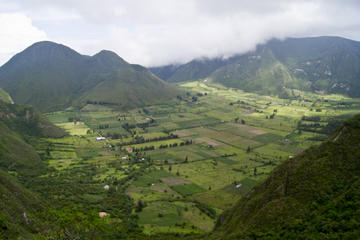 Pululahua
Pululahua Only two craters in the world are inhabited—and Pululahua is one of them. Essentially a fog-filled, fertile bowl set 9,000 feet in the sky, Pululahua is the only crater in the world that’s also actively farmed. Though the area rarely ever receives rain, the rolling fog provides ample moi
Pululahua
Pululahua Only two craters in the world are inhabited—and Pululahua is one of them. Essentially a fog-filled, fertile bowl set 9,000 feet in the sky, Pululahua is the only crater in the world that’s also actively farmed. Though the area rarely ever receives rain, the rolling fog provides ample moi
-
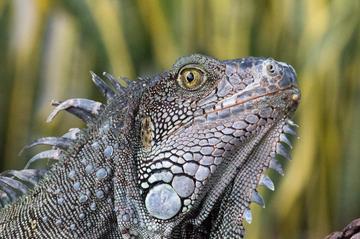 Parque de las Iguanas
Parque de las Iguanas At the heart of Guayaquil’s colonial center, overlooked by the grand Cathedral of Guayaquil and centered on a monumental statue of Simon Bolivar, Seminar Park would be largely unnoteworthy, if it wasn’t for the sizable population of iguanas that inhabit the small park. Aptly
Parque de las Iguanas
Parque de las Iguanas At the heart of Guayaquil’s colonial center, overlooked by the grand Cathedral of Guayaquil and centered on a monumental statue of Simon Bolivar, Seminar Park would be largely unnoteworthy, if it wasn’t for the sizable population of iguanas that inhabit the small park. Aptly
-
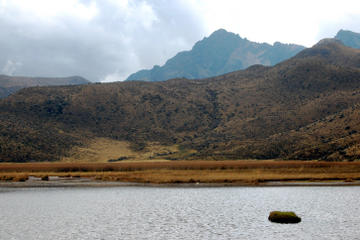 Limpiopungo Lagoon
Limpiopungo Lagoon Like a mirror that reflects the beauty of the surrounding peaks, Limpiopungo Lagoon, tucked in a valley of the Cotopaxi National Park at over 12,400 feet (3,800 meters) above sea level, forms part of Ecuador’s Avenue of the Volcanoes.Head south from Quito and enjoy the constantl
Limpiopungo Lagoon
Limpiopungo Lagoon Like a mirror that reflects the beauty of the surrounding peaks, Limpiopungo Lagoon, tucked in a valley of the Cotopaxi National Park at over 12,400 feet (3,800 meters) above sea level, forms part of Ecuador’s Avenue of the Volcanoes.Head south from Quito and enjoy the constantl
-
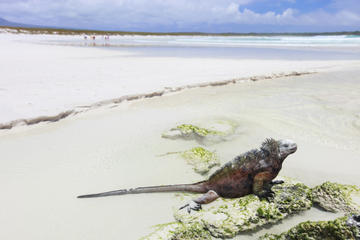 Tortuga Bay Beach
Tortuga Bay Beach This white sandy beach area is one of the most famous in the Galapagos, both for its beauty and for its wildlife. Sightings of marine iguanas, sea lions, crabs, birds and, of course, turtles are frequent. There are two main stretches of beach; the first is popular for surfing, th
Tortuga Bay Beach
Tortuga Bay Beach This white sandy beach area is one of the most famous in the Galapagos, both for its beauty and for its wildlife. Sightings of marine iguanas, sea lions, crabs, birds and, of course, turtles are frequent. There are two main stretches of beach; the first is popular for surfing, th
-
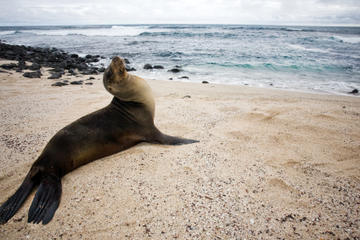 Santa Cruz Island
Santa Cruz Island Santa Cruz is easily the most central island for Galapagos visitors. Welcoming overnight visitors (only four of the islands do so), it can serve as the perfect home base from which you can explore the islands. Though it is not the largest island, it is certainly the most popular
Santa Cruz Island
Santa Cruz Island Santa Cruz is easily the most central island for Galapagos visitors. Welcoming overnight visitors (only four of the islands do so), it can serve as the perfect home base from which you can explore the islands. Though it is not the largest island, it is certainly the most popular
-
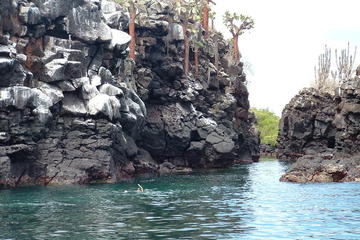 Canal del Amor
Canal del Amor Anyone who is looking to make the most of Santa Cruz in the Galapagos cannot miss an opportunity to see the Canal del Amor, or the Love Channel. The complete natural adventure, Canal del Amor is not considered a visitor site, but has a spectacular turquoise channel bedded in between
Canal del Amor
Canal del Amor Anyone who is looking to make the most of Santa Cruz in the Galapagos cannot miss an opportunity to see the Canal del Amor, or the Love Channel. The complete natural adventure, Canal del Amor is not considered a visitor site, but has a spectacular turquoise channel bedded in between
-
 Inaquito Market
Inaquito Market Iñaquito Market, located in North Quito between Avenida 10 de Agosto and Rio Amazonas, is one of the city’s most colorful indoor markets and a great place to get a feel for the local pulse of Ecuador’s capital. The market’s stalls are stacked with colorful exotic fruits and vegetab
Inaquito Market
Inaquito Market Iñaquito Market, located in North Quito between Avenida 10 de Agosto and Rio Amazonas, is one of the city’s most colorful indoor markets and a great place to get a feel for the local pulse of Ecuador’s capital. The market’s stalls are stacked with colorful exotic fruits and vegetab
-
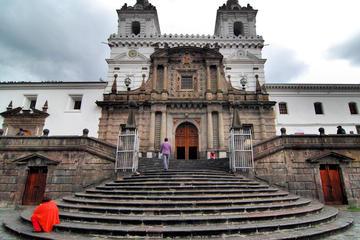 San Francisco Church
San Francisco Church Nestled in the historic downtown area of Quito, visitors find the first Catholic Church built in the city, the San Francisco Church (Iglesia de San Francisco). The amazing architecture of this Baroque church blends different styles that were incorporated over the more than 100
San Francisco Church
San Francisco Church Nestled in the historic downtown area of Quito, visitors find the first Catholic Church built in the city, the San Francisco Church (Iglesia de San Francisco). The amazing architecture of this Baroque church blends different styles that were incorporated over the more than 100
-
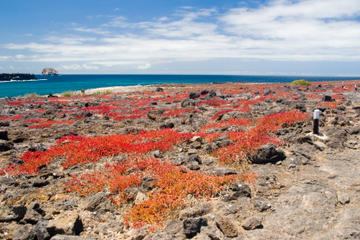 Seymour Island
Seymour Island Not to be confused with the island of South Seymour, more commonly referred to as Baltra (the location of the main Galapagos airport, as well as a military base), North Seymour is a small island that is flat and uplifted, unlike many of its volcanic neighbors. The most intriguing as
Seymour Island
Seymour Island Not to be confused with the island of South Seymour, more commonly referred to as Baltra (the location of the main Galapagos airport, as well as a military base), North Seymour is a small island that is flat and uplifted, unlike many of its volcanic neighbors. The most intriguing as
-
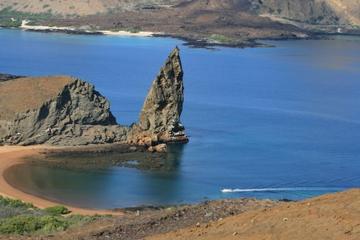 Bartolome Island
Bartolome Island Isla Bartolome, located off the east shore of Sullivan Bay, is a small but beautiful island most famous for its iconic Pinnacle Rock, arguably one of the most recognizable landmarks of the Galapagos. This incredible geological site is a staggering rock face, formed from an eroded
Bartolome Island
Bartolome Island Isla Bartolome, located off the east shore of Sullivan Bay, is a small but beautiful island most famous for its iconic Pinnacle Rock, arguably one of the most recognizable landmarks of the Galapagos. This incredible geological site is a staggering rock face, formed from an eroded
-
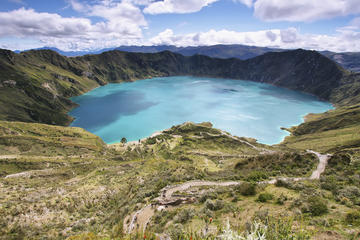 Quilotoa Lagoon
Quilotoa Lagoon Quilotoa, a village and a lake with the same name, is an increasingly popular tourist destination in Ecuador. Located southwest of Quito, it makes for a pleasant trip past the indigenous villages that populate the countryside.Quilotoa Lagoon was formed by the collapse of a now-exti
Quilotoa Lagoon
Quilotoa Lagoon Quilotoa, a village and a lake with the same name, is an increasingly popular tourist destination in Ecuador. Located southwest of Quito, it makes for a pleasant trip past the indigenous villages that populate the countryside.Quilotoa Lagoon was formed by the collapse of a now-exti
-
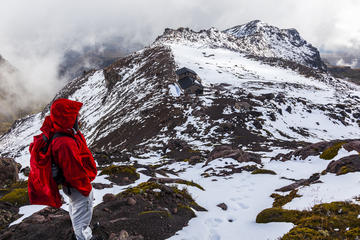 Cayambe Volcano
Cayambe Volcano The majestic snow-hatted peak of Cayambe Volcano serves as a dramatic backdrop to the Cayambe Coca Ecological Reserve and at a dizzying 5,790 meters, it’s Ecuador’s third-highest peak. Cayambe’s real claim to fame is its unique location – the highest mountain and only volcano in th
Cayambe Volcano
Cayambe Volcano The majestic snow-hatted peak of Cayambe Volcano serves as a dramatic backdrop to the Cayambe Coca Ecological Reserve and at a dizzying 5,790 meters, it’s Ecuador’s third-highest peak. Cayambe’s real claim to fame is its unique location – the highest mountain and only volcano in th
-
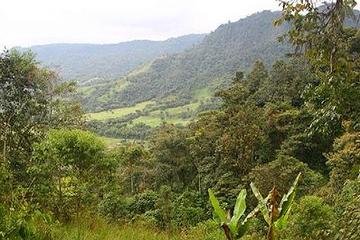 Mindo Rainforest
Mindo Rainforest The Mindo-Nambillo Ecological Reserve is one of the most biologically diverse forests in the world. Its damp environs create a very special ecosystem that nourishes trees and plants and attracts an amazing variety of birds. Mindo’s mild and damp climate – a few degrees lower than
Mindo Rainforest
Mindo Rainforest The Mindo-Nambillo Ecological Reserve is one of the most biologically diverse forests in the world. Its damp environs create a very special ecosystem that nourishes trees and plants and attracts an amazing variety of birds. Mindo’s mild and damp climate – a few degrees lower than
-
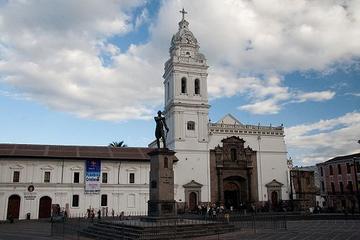 Santo Domingo Plaza (Plaza de Santa Domingo)
Santo Domingo Plaza (Plaza de Santa Domingo) Santa Domingo Plaza graces the southern edge of Quito’s Old Town and is easily missed by visitors. It’s an airy plaza, dominated by the imposing Santo Domingo Cathedral on its southeastern side. In the center of the square a statue of hero Antonio José
Santo Domingo Plaza (Plaza de Santa Domingo)
Santo Domingo Plaza (Plaza de Santa Domingo) Santa Domingo Plaza graces the southern edge of Quito’s Old Town and is easily missed by visitors. It’s an airy plaza, dominated by the imposing Santo Domingo Cathedral on its southeastern side. In the center of the square a statue of hero Antonio José
-
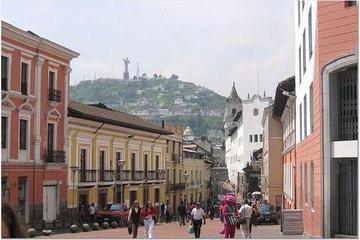 Quito Old Town
Quito Old Town Quito’s unmissable historic center, or Old Town, extends over 320 hectares (790 acres) and is the largest historic center in the Americas.Made a UNESCO World Heritage site in 1978, Quito has taken great pride in restoring its colonial buildings and sprucing up its public spaces to e
Quito Old Town
Quito Old Town Quito’s unmissable historic center, or Old Town, extends over 320 hectares (790 acres) and is the largest historic center in the Americas.Made a UNESCO World Heritage site in 1978, Quito has taken great pride in restoring its colonial buildings and sprucing up its public spaces to e
-
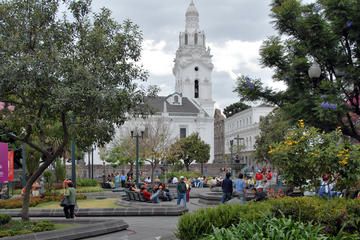 Independence Plaza (Plaza de la Independencia)
Independence Plaza (Plaza de la Independencia) Plaza de la Independencia, known as Plaza Grande to the locals, was Quito’s main square in the 16th century, serving as central market and bullfighting area. The plaza contains several important buildings: the Archbishop’s Palace to the north, City Ha
Independence Plaza (Plaza de la Independencia)
Independence Plaza (Plaza de la Independencia) Plaza de la Independencia, known as Plaza Grande to the locals, was Quito’s main square in the 16th century, serving as central market and bullfighting area. The plaza contains several important buildings: the Archbishop’s Palace to the north, City Ha
-
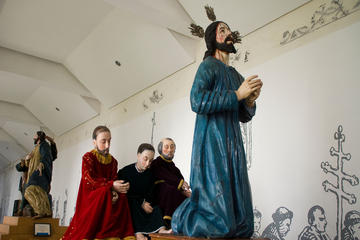 Museum of Colonial Art (Museo De Arte Colonial)
Museum of Colonial Art (Museo De Arte Colonial) A short stroll from Plaza Grande, the Museum of Colonial Art (or Museo de Arte Colonial) is in a restored 17th century mansion and includes a fine collection of 16th to 18th century paintings, sculpture and furniture.Works by renowned ‘Quito School’
Museum of Colonial Art (Museo De Arte Colonial)
Museum of Colonial Art (Museo De Arte Colonial) A short stroll from Plaza Grande, the Museum of Colonial Art (or Museo de Arte Colonial) is in a restored 17th century mansion and includes a fine collection of 16th to 18th century paintings, sculpture and furniture.Works by renowned ‘Quito School’
-
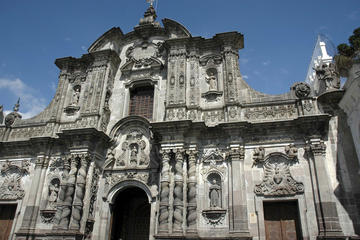 Church of the Society of Jesus (Iglesia La Compañía de Jesús)
Church of the Society of Jesus (Iglesia La Compañía de Jesús) The Church of the Society of Jesus, (in Spanish, Iglesia de la Compañía de Jesús), often called la Compañía, is a Jesuit church in Quito and is one of the most significant works of Spanish Baroque architecture in South America. The comp
Church of the Society of Jesus (Iglesia La Compañía de Jesús)
Church of the Society of Jesus (Iglesia La Compañía de Jesús) The Church of the Society of Jesus, (in Spanish, Iglesia de la Compañía de Jesús), often called la Compañía, is a Jesuit church in Quito and is one of the most significant works of Spanish Baroque architecture in South America. The comp
-
 Termas de Papallacta Spa
Termas de Papallacta Spa Just a 40-mile (67-km) ride from Quito through the Amazon jungle lies the 625 acres (253 hectares) of the privately owned Termas de Papallacta Spa. This hotel spa and resort features thermal baths on the banks of the Papallacta River, which crosses the property. Situated i
Termas de Papallacta Spa
Termas de Papallacta Spa Just a 40-mile (67-km) ride from Quito through the Amazon jungle lies the 625 acres (253 hectares) of the privately owned Termas de Papallacta Spa. This hotel spa and resort features thermal baths on the banks of the Papallacta River, which crosses the property. Situated i
Total
374 -travel
FirstPage PreviousPage NextPage LastPage CurrentPage:
2/19 20-travel/Page Goto:
 Avenue of the Volcanoes
Avenue of the Volcanoes South of Quito, two parallel mountain ranges run from north to south along a 124-mile (200-km) route where more than a dozen of Ecuador’s volcanoes are found. German explorer Alexander von Humboldt called it the Avenue of the Volcanoes in the 18th century, and aptly so. Eig
Avenue of the Volcanoes
Avenue of the Volcanoes South of Quito, two parallel mountain ranges run from north to south along a 124-mile (200-km) route where more than a dozen of Ecuador’s volcanoes are found. German explorer Alexander von Humboldt called it the Avenue of the Volcanoes in the 18th century, and aptly so. Eig
 Pululahua
Pululahua Only two craters in the world are inhabited—and Pululahua is one of them. Essentially a fog-filled, fertile bowl set 9,000 feet in the sky, Pululahua is the only crater in the world that’s also actively farmed. Though the area rarely ever receives rain, the rolling fog provides ample moi
Pululahua
Pululahua Only two craters in the world are inhabited—and Pululahua is one of them. Essentially a fog-filled, fertile bowl set 9,000 feet in the sky, Pululahua is the only crater in the world that’s also actively farmed. Though the area rarely ever receives rain, the rolling fog provides ample moi
 Parque de las Iguanas
Parque de las Iguanas At the heart of Guayaquil’s colonial center, overlooked by the grand Cathedral of Guayaquil and centered on a monumental statue of Simon Bolivar, Seminar Park would be largely unnoteworthy, if it wasn’t for the sizable population of iguanas that inhabit the small park. Aptly
Parque de las Iguanas
Parque de las Iguanas At the heart of Guayaquil’s colonial center, overlooked by the grand Cathedral of Guayaquil and centered on a monumental statue of Simon Bolivar, Seminar Park would be largely unnoteworthy, if it wasn’t for the sizable population of iguanas that inhabit the small park. Aptly
 Limpiopungo Lagoon
Limpiopungo Lagoon Like a mirror that reflects the beauty of the surrounding peaks, Limpiopungo Lagoon, tucked in a valley of the Cotopaxi National Park at over 12,400 feet (3,800 meters) above sea level, forms part of Ecuador’s Avenue of the Volcanoes.Head south from Quito and enjoy the constantl
Limpiopungo Lagoon
Limpiopungo Lagoon Like a mirror that reflects the beauty of the surrounding peaks, Limpiopungo Lagoon, tucked in a valley of the Cotopaxi National Park at over 12,400 feet (3,800 meters) above sea level, forms part of Ecuador’s Avenue of the Volcanoes.Head south from Quito and enjoy the constantl
 Tortuga Bay Beach
Tortuga Bay Beach This white sandy beach area is one of the most famous in the Galapagos, both for its beauty and for its wildlife. Sightings of marine iguanas, sea lions, crabs, birds and, of course, turtles are frequent. There are two main stretches of beach; the first is popular for surfing, th
Tortuga Bay Beach
Tortuga Bay Beach This white sandy beach area is one of the most famous in the Galapagos, both for its beauty and for its wildlife. Sightings of marine iguanas, sea lions, crabs, birds and, of course, turtles are frequent. There are two main stretches of beach; the first is popular for surfing, th
 Santa Cruz Island
Santa Cruz Island Santa Cruz is easily the most central island for Galapagos visitors. Welcoming overnight visitors (only four of the islands do so), it can serve as the perfect home base from which you can explore the islands. Though it is not the largest island, it is certainly the most popular
Santa Cruz Island
Santa Cruz Island Santa Cruz is easily the most central island for Galapagos visitors. Welcoming overnight visitors (only four of the islands do so), it can serve as the perfect home base from which you can explore the islands. Though it is not the largest island, it is certainly the most popular
 Canal del Amor
Canal del Amor Anyone who is looking to make the most of Santa Cruz in the Galapagos cannot miss an opportunity to see the Canal del Amor, or the Love Channel. The complete natural adventure, Canal del Amor is not considered a visitor site, but has a spectacular turquoise channel bedded in between
Canal del Amor
Canal del Amor Anyone who is looking to make the most of Santa Cruz in the Galapagos cannot miss an opportunity to see the Canal del Amor, or the Love Channel. The complete natural adventure, Canal del Amor is not considered a visitor site, but has a spectacular turquoise channel bedded in between
 Inaquito Market
Inaquito Market Iñaquito Market, located in North Quito between Avenida 10 de Agosto and Rio Amazonas, is one of the city’s most colorful indoor markets and a great place to get a feel for the local pulse of Ecuador’s capital. The market’s stalls are stacked with colorful exotic fruits and vegetab
Inaquito Market
Inaquito Market Iñaquito Market, located in North Quito between Avenida 10 de Agosto and Rio Amazonas, is one of the city’s most colorful indoor markets and a great place to get a feel for the local pulse of Ecuador’s capital. The market’s stalls are stacked with colorful exotic fruits and vegetab
 San Francisco Church
San Francisco Church Nestled in the historic downtown area of Quito, visitors find the first Catholic Church built in the city, the San Francisco Church (Iglesia de San Francisco). The amazing architecture of this Baroque church blends different styles that were incorporated over the more than 100
San Francisco Church
San Francisco Church Nestled in the historic downtown area of Quito, visitors find the first Catholic Church built in the city, the San Francisco Church (Iglesia de San Francisco). The amazing architecture of this Baroque church blends different styles that were incorporated over the more than 100
 Seymour Island
Seymour Island Not to be confused with the island of South Seymour, more commonly referred to as Baltra (the location of the main Galapagos airport, as well as a military base), North Seymour is a small island that is flat and uplifted, unlike many of its volcanic neighbors. The most intriguing as
Seymour Island
Seymour Island Not to be confused with the island of South Seymour, more commonly referred to as Baltra (the location of the main Galapagos airport, as well as a military base), North Seymour is a small island that is flat and uplifted, unlike many of its volcanic neighbors. The most intriguing as
 Bartolome Island
Bartolome Island Isla Bartolome, located off the east shore of Sullivan Bay, is a small but beautiful island most famous for its iconic Pinnacle Rock, arguably one of the most recognizable landmarks of the Galapagos. This incredible geological site is a staggering rock face, formed from an eroded
Bartolome Island
Bartolome Island Isla Bartolome, located off the east shore of Sullivan Bay, is a small but beautiful island most famous for its iconic Pinnacle Rock, arguably one of the most recognizable landmarks of the Galapagos. This incredible geological site is a staggering rock face, formed from an eroded
 Quilotoa Lagoon
Quilotoa Lagoon Quilotoa, a village and a lake with the same name, is an increasingly popular tourist destination in Ecuador. Located southwest of Quito, it makes for a pleasant trip past the indigenous villages that populate the countryside.Quilotoa Lagoon was formed by the collapse of a now-exti
Quilotoa Lagoon
Quilotoa Lagoon Quilotoa, a village and a lake with the same name, is an increasingly popular tourist destination in Ecuador. Located southwest of Quito, it makes for a pleasant trip past the indigenous villages that populate the countryside.Quilotoa Lagoon was formed by the collapse of a now-exti
 Cayambe Volcano
Cayambe Volcano The majestic snow-hatted peak of Cayambe Volcano serves as a dramatic backdrop to the Cayambe Coca Ecological Reserve and at a dizzying 5,790 meters, it’s Ecuador’s third-highest peak. Cayambe’s real claim to fame is its unique location – the highest mountain and only volcano in th
Cayambe Volcano
Cayambe Volcano The majestic snow-hatted peak of Cayambe Volcano serves as a dramatic backdrop to the Cayambe Coca Ecological Reserve and at a dizzying 5,790 meters, it’s Ecuador’s third-highest peak. Cayambe’s real claim to fame is its unique location – the highest mountain and only volcano in th
 Mindo Rainforest
Mindo Rainforest The Mindo-Nambillo Ecological Reserve is one of the most biologically diverse forests in the world. Its damp environs create a very special ecosystem that nourishes trees and plants and attracts an amazing variety of birds. Mindo’s mild and damp climate – a few degrees lower than
Mindo Rainforest
Mindo Rainforest The Mindo-Nambillo Ecological Reserve is one of the most biologically diverse forests in the world. Its damp environs create a very special ecosystem that nourishes trees and plants and attracts an amazing variety of birds. Mindo’s mild and damp climate – a few degrees lower than
 Santo Domingo Plaza (Plaza de Santa Domingo)
Santo Domingo Plaza (Plaza de Santa Domingo) Santa Domingo Plaza graces the southern edge of Quito’s Old Town and is easily missed by visitors. It’s an airy plaza, dominated by the imposing Santo Domingo Cathedral on its southeastern side. In the center of the square a statue of hero Antonio José
Santo Domingo Plaza (Plaza de Santa Domingo)
Santo Domingo Plaza (Plaza de Santa Domingo) Santa Domingo Plaza graces the southern edge of Quito’s Old Town and is easily missed by visitors. It’s an airy plaza, dominated by the imposing Santo Domingo Cathedral on its southeastern side. In the center of the square a statue of hero Antonio José
 Quito Old Town
Quito Old Town Quito’s unmissable historic center, or Old Town, extends over 320 hectares (790 acres) and is the largest historic center in the Americas.Made a UNESCO World Heritage site in 1978, Quito has taken great pride in restoring its colonial buildings and sprucing up its public spaces to e
Quito Old Town
Quito Old Town Quito’s unmissable historic center, or Old Town, extends over 320 hectares (790 acres) and is the largest historic center in the Americas.Made a UNESCO World Heritage site in 1978, Quito has taken great pride in restoring its colonial buildings and sprucing up its public spaces to e
 Independence Plaza (Plaza de la Independencia)
Independence Plaza (Plaza de la Independencia) Plaza de la Independencia, known as Plaza Grande to the locals, was Quito’s main square in the 16th century, serving as central market and bullfighting area. The plaza contains several important buildings: the Archbishop’s Palace to the north, City Ha
Independence Plaza (Plaza de la Independencia)
Independence Plaza (Plaza de la Independencia) Plaza de la Independencia, known as Plaza Grande to the locals, was Quito’s main square in the 16th century, serving as central market and bullfighting area. The plaza contains several important buildings: the Archbishop’s Palace to the north, City Ha
 Museum of Colonial Art (Museo De Arte Colonial)
Museum of Colonial Art (Museo De Arte Colonial) A short stroll from Plaza Grande, the Museum of Colonial Art (or Museo de Arte Colonial) is in a restored 17th century mansion and includes a fine collection of 16th to 18th century paintings, sculpture and furniture.Works by renowned ‘Quito School’
Museum of Colonial Art (Museo De Arte Colonial)
Museum of Colonial Art (Museo De Arte Colonial) A short stroll from Plaza Grande, the Museum of Colonial Art (or Museo de Arte Colonial) is in a restored 17th century mansion and includes a fine collection of 16th to 18th century paintings, sculpture and furniture.Works by renowned ‘Quito School’
 Church of the Society of Jesus (Iglesia La Compañía de Jesús)
Church of the Society of Jesus (Iglesia La Compañía de Jesús) The Church of the Society of Jesus, (in Spanish, Iglesia de la Compañía de Jesús), often called la Compañía, is a Jesuit church in Quito and is one of the most significant works of Spanish Baroque architecture in South America. The comp
Church of the Society of Jesus (Iglesia La Compañía de Jesús)
Church of the Society of Jesus (Iglesia La Compañía de Jesús) The Church of the Society of Jesus, (in Spanish, Iglesia de la Compañía de Jesús), often called la Compañía, is a Jesuit church in Quito and is one of the most significant works of Spanish Baroque architecture in South America. The comp
 Termas de Papallacta Spa
Termas de Papallacta Spa Just a 40-mile (67-km) ride from Quito through the Amazon jungle lies the 625 acres (253 hectares) of the privately owned Termas de Papallacta Spa. This hotel spa and resort features thermal baths on the banks of the Papallacta River, which crosses the property. Situated i
Termas de Papallacta Spa
Termas de Papallacta Spa Just a 40-mile (67-km) ride from Quito through the Amazon jungle lies the 625 acres (253 hectares) of the privately owned Termas de Papallacta Spa. This hotel spa and resort features thermal baths on the banks of the Papallacta River, which crosses the property. Situated i